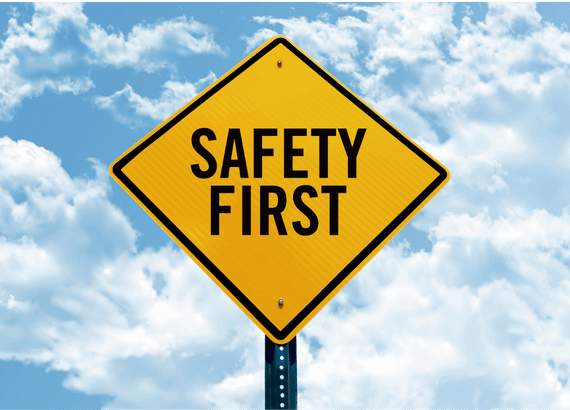
Running is an invigorating and exhilarating activity that offers a wide range of physical and mental benefits. Whether you're a seasoned marathoner or someone who enjoys casual jogs, it's essential to prioritize safety during your runs. While running provides numerous health advantages, it also carries inherent risks, such as accidents, injuries, or encounters with potential dangers. By incorporating proper safety measures into your running routine, you can minimize these risks and ensure a secure and enjoyable running experience.
In this article, we will delve into essential running safety tips that will help you stay safe and secure on your runs. These tips are applicable to runners of all levels and will empower you to take proactive steps to protect yourself during your running sessions. By following these guidelines, you can run with confidence, knowing that you have taken the necessary precautions to safeguard your well-being.
1. Plan Your Route
Planning your running route in advance is crucial for your safety. Consider well-lit areas, routes with less traffic, and popular running paths or trails. Inform a family member or a friend about your route and estimated time of return, especially if you're running alone.
2. Wear Proper Gear
Wearing appropriate running gear not only enhances your performance but also contributes to your safety. Invest in high-visibility clothing, especially if running during low-light conditions. Choose reflective accessories and shoes with reflective elements to make yourself more visible to motorists and other runners.
3. Stay Aware of Your Surroundings
Remaining alert and aware of your surroundings is crucial for your safety. Avoid distractions such as wearing headphones at high volumes, as they can prevent you from hearing approaching vehicles or potential hazards. Keep an eye on the road or trail ahead and be mindful of any obstacles or changes in terrain.

4. Run Against Traffic
When running on the road, always run against the direction of traffic. This allows you to see approaching vehicles and react accordingly. Be sure to make eye contact with drivers before crossing intersections, and obey traffic signals and pedestrian right-of-way rules.
5. Carry Identification and a Phone
Carrying identification, such as an ID card or a wristband with emergency contact information, is essential in case of an accident or medical emergency. Additionally, carry a fully charged mobile phone with you for emergency purposes or to seek assistance if needed.
6. Use Well-Lit and Populated Areas
Whenever possible, choose well-lit and populated running routes, particularly during early morning or evening runs. Parks, running trails, and residential areas with good lighting and frequent foot traffic provide a safer environment for your runs.
7. Follow Traffic Rules and Signals
Adhere to traffic rules and signals when crossing streets or running in urban areas. Use crosswalks and pedestrian bridges whenever available, and make sure to wait for a clear signal before crossing. Stay cautious and be predictable in your movements to ensure drivers can anticipate your actions.
8. Vary Your Running Routine
By varying your running routine, you can avoid predictability and reduce the risk of becoming a target for potential criminals. Change your routes, running times, and days to keep your running routine less predictable.
9. Trust Your Instincts
Listen to your gut instincts and trust your intuition. If a situation or an area doesn't feel safe, alter your course or find an alternative route. Your safety should always be your top priority.
10. Run With a Buddy
Running with a buddy or joining a local running group not only adds an element of socialization but also increases your safety. Running with others provides extra protection and support, especially in unfamiliar areas or during nighttime runs.
Conclusion
Running is a fantastic way to stay fit, relieve stress, and enjoy the outdoors. However, it's essential to prioritize safety during your runs to minimize the risk of accidents and ensure a secure running experience. By following the running safety tips outlined in this article, you can significantly enhance your safety while running and enjoy your runs with peace of mind.
Remember to plan your route in advance, wear proper gear that enhances your visibility, and stay aware of your surroundings at all times. Running against traffic, carrying identification and a phone, and using well-lit and populated areas can further contribute to your safety. Additionally, following traffic rules, varying your running routine, trusting your instincts, and running with a buddy are important safety measures to incorporate into your running practice.
Running should be a positive and enjoyable experience, and by prioritizing safety, you can fully embrace the physical and mental benefits that running offers. Whether you're a beginner or a seasoned runner, these safety tips will help you stay safe and secure on your runs, allowing you to focus on your goals, improve your fitness, and explore new running adventures.
So, lace up your running shoes, implement these safety measures, and hit the pavement with confidence. Stay safe, be vigilant, and enjoy the freedom and exhilaration that running brings!








